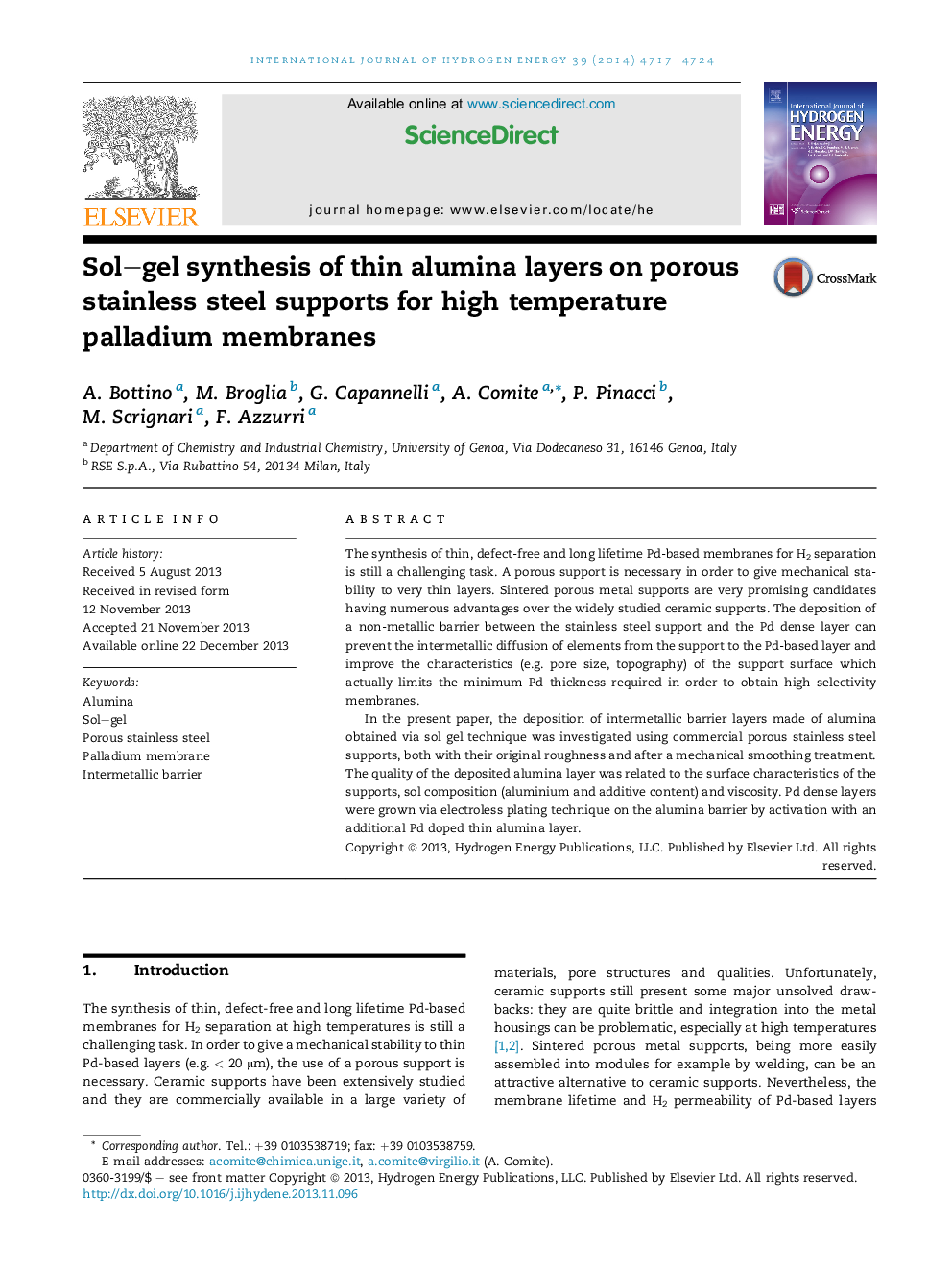| Article ID | Journal | Published Year | Pages | File Type |
|---|---|---|---|---|
| 1270563 | International Journal of Hydrogen Energy | 2014 | 8 Pages |
•Defect-free alumina layers have been deposited on porous stainless steel supports via sol gel technique.•Supports with improved surface by smoothing the original roughness have been investigated.•Thin palladium layers have been growth on the alumina barrier layers.
The synthesis of thin, defect-free and long lifetime Pd-based membranes for H2 separation is still a challenging task. A porous support is necessary in order to give mechanical stability to very thin layers. Sintered porous metal supports are very promising candidates having numerous advantages over the widely studied ceramic supports. The deposition of a non-metallic barrier between the stainless steel support and the Pd dense layer can prevent the intermetallic diffusion of elements from the support to the Pd-based layer and improve the characteristics (e.g. pore size, topography) of the support surface which actually limits the minimum Pd thickness required in order to obtain high selectivity membranes.In the present paper, the deposition of intermetallic barrier layers made of alumina obtained via sol gel technique was investigated using commercial porous stainless steel supports, both with their original roughness and after a mechanical smoothing treatment. The quality of the deposited alumina layer was related to the surface characteristics of the supports, sol composition (aluminium and additive content) and viscosity. Pd dense layers were grown via electroless plating technique on the alumina barrier by activation with an additional Pd doped thin alumina layer.
